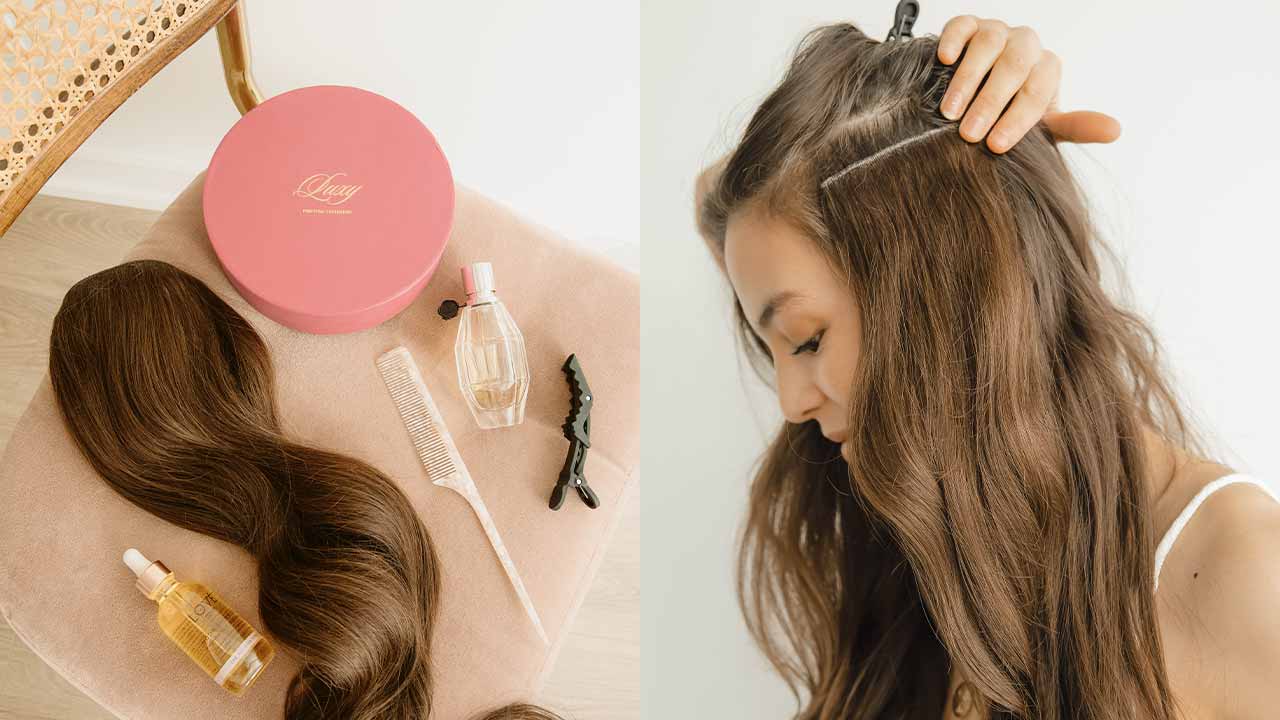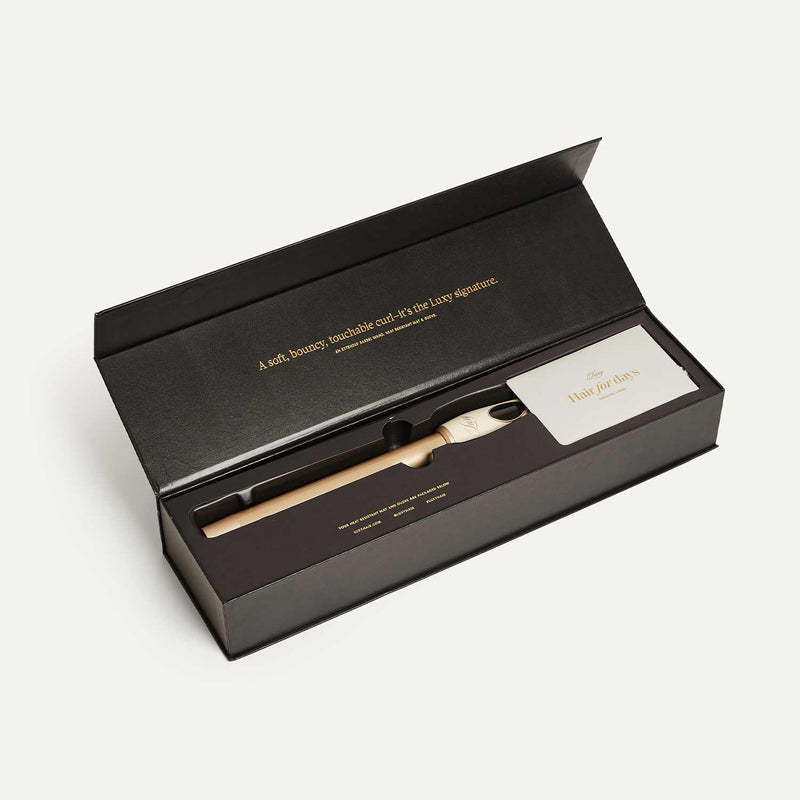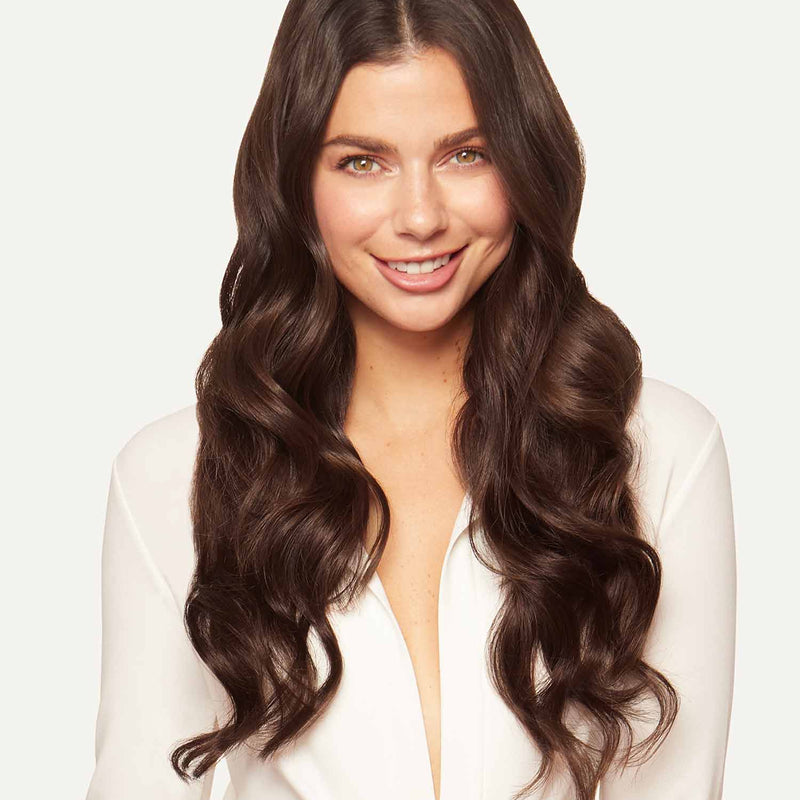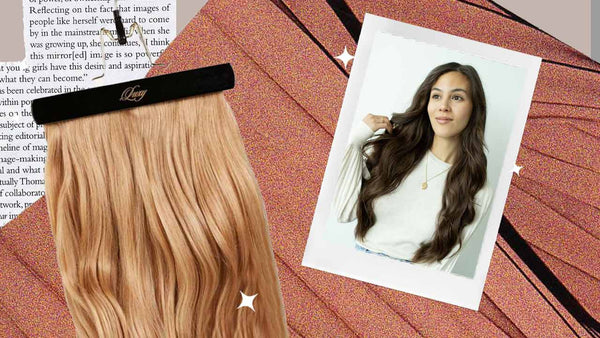Clip-ins, tape-ins, weaves, pre-bonded, fusion, micro-link...what does it all mean? There are so many different styles of extensions and terms, that it can get overwhelming if you are new to the world of hair extensions. Although Luxy Hair Extensions are 100% remy human hair clip-ins, hair extensions are not limited to this particular kind. We're breaking down the different types of extensions to help clear up some confusion.
The following article will provide clarity and help you make the best choice for your hair. So get comfortable, tie your hair back, and let’s get right into it.
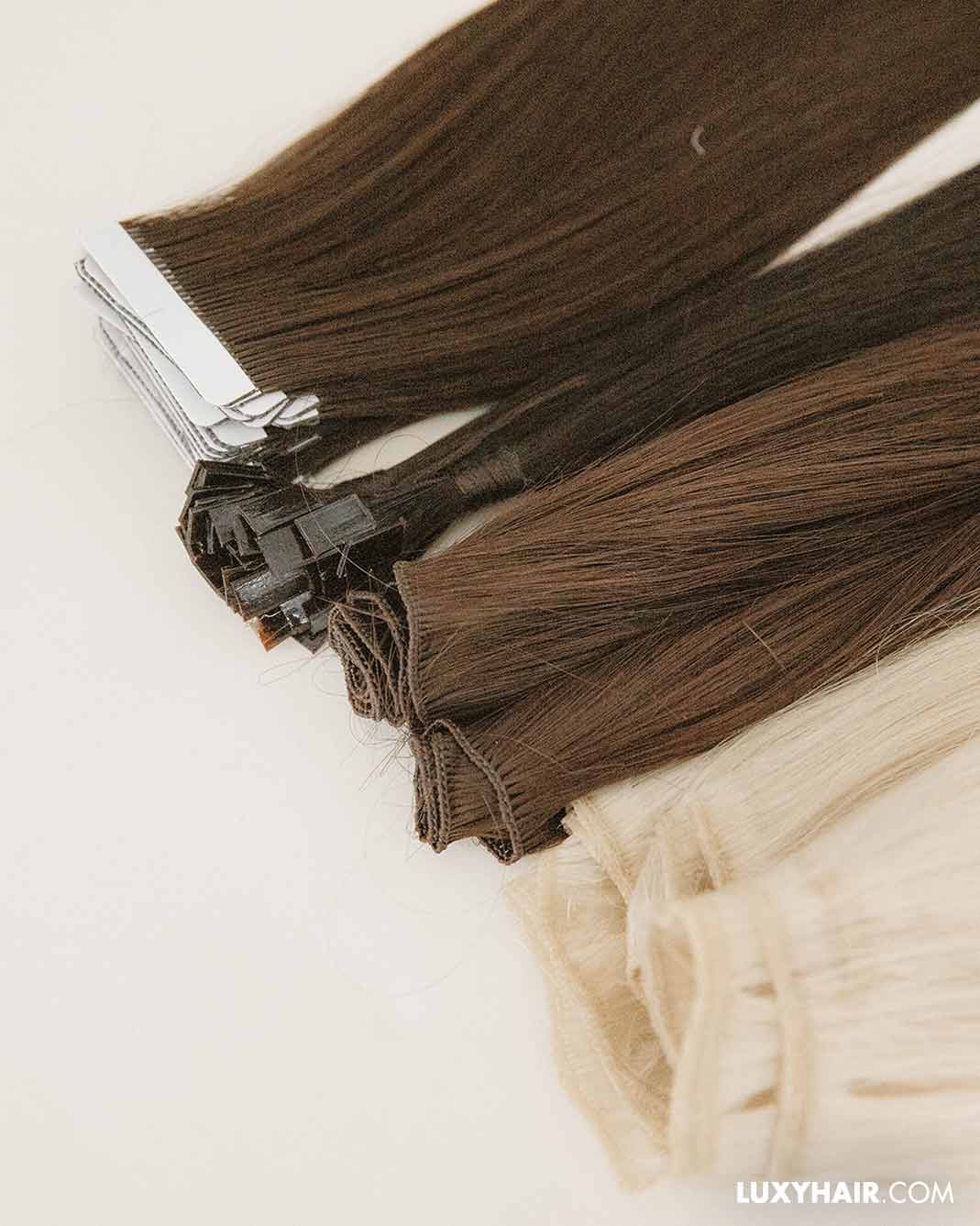
Real Human Hair Extensions vs. Synthetic Hair Extensions
Before getting into the different types of hair extension application methods, the first thing you need to to know about hair extensions is that they come in real human hair extensions and synthetic hair extensions. So, what is the difference between them?
How Hair Extensions Are Made
Human hair extensions are exactly what they sound like. They are made out of real, human hair from top to bottom, collected from a donor. Remy hair means all the cuticles (the outer layer of the hair) are intact, running in the same direction at the time of collection. This allows for almost no tangling and ensures that the extensions remain smooth and silky throughout their lifetime.
Synthetic hair, on the other hand, is made out of various synthetic, blended fibres, and contains no human hair. These fibres are usually very fine, plastic fibres that are manufactured to imitate real human hair.

Look & Feel
Both real and synthetic extensions come in many styles, colours, and different forms of application. The quality of synthetic fibres can vary, but they are generally stiff and move differently from human hair, so they don’t blend as well with your natural hair. They sometimes have a wiry or coarse feel to the touch. Real hair looks and feels real (because it is!) and therefore blends more naturally with your hair.
Coloring & Styling
Human hair extensions can be treated just like your own natural hair. You can straighten, curl, blow dry, color them, and apply hair products. With synthetic hair, you cannot color the hair as most dyes contain ammonia or bleach, which would destroy the synthetic hair. Additionally, you cannot style synthetic hair the same way as your real hair because heat can damage them so curling irons, straighteners and blow dryers are a no go, as they will melt or severely damage the hair. Other factors such as sun, friction, or harsh hair products can also damage synthetic hair extensions.
Quality & How Long Hair Extensions Last
Synthetic hair is cheaper than real hair, but of course with that, comes a trade-off. Because they’re made out of synthetic fibres, they do not last as long as human hair as they can easily be damaged by the above-mentioned factors (sun, heat, etc.) Generally, synthetic hair extensions last for a few months, whereas human hair extensions can last upwards of one year if they are well taken care of. Luxy Hair remy human hair extensions last for about one year on average.
In summary, human hair can be treated and styled just like your own hair, and will look and feel the most natural. It will blend easily with your hair and last much longer than synthetic hair. Although they are cheaper than real hair, synthetic hair does not look as natural, cannot be styled with heating tools and do not last as long as real hair.
Now that we’ve gotten real vs. synthetic out of the way, let’s get into the different types of extension applications!
1. Clip-in Hair Extensions
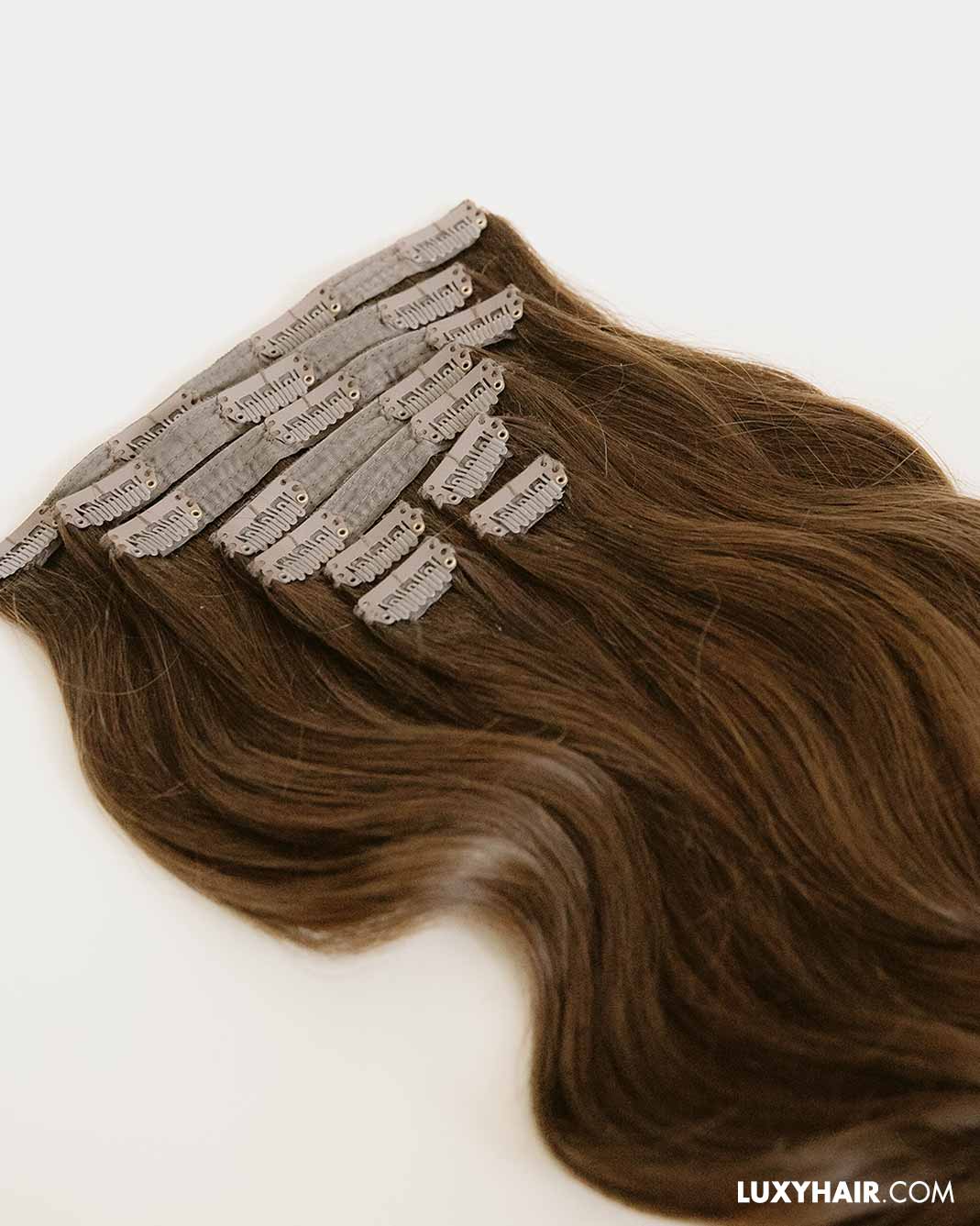
What Are They?
Clip-in wefts, also known as clip-in hair extensions, come in a strand of contoured pieces, attached at the base with either fabric or silicone. Clips are attached to this base and come ready to use. All you have to do is clip the pieces to your natural hair all on your own! Each clip snaps open and close with ease—see here for how to clip them in.
Clip-in hair extensions are the least permanent style of extensions because you can quickly remove them and put them back on whenever you want. Unlike some of the other hair extension applications mentioned above, clip-ins usually take 5 – 15 minutes to apply at home. Clip-in hair extensions are also the least damaging because they don’t involve any chemicals, heat, pressure, or other installation methods mentioned above—they simply clip onto your hair with ease so there is zero damage to your natural hair. This is one of the many reasons why it’s one of the most popular hair extension types.
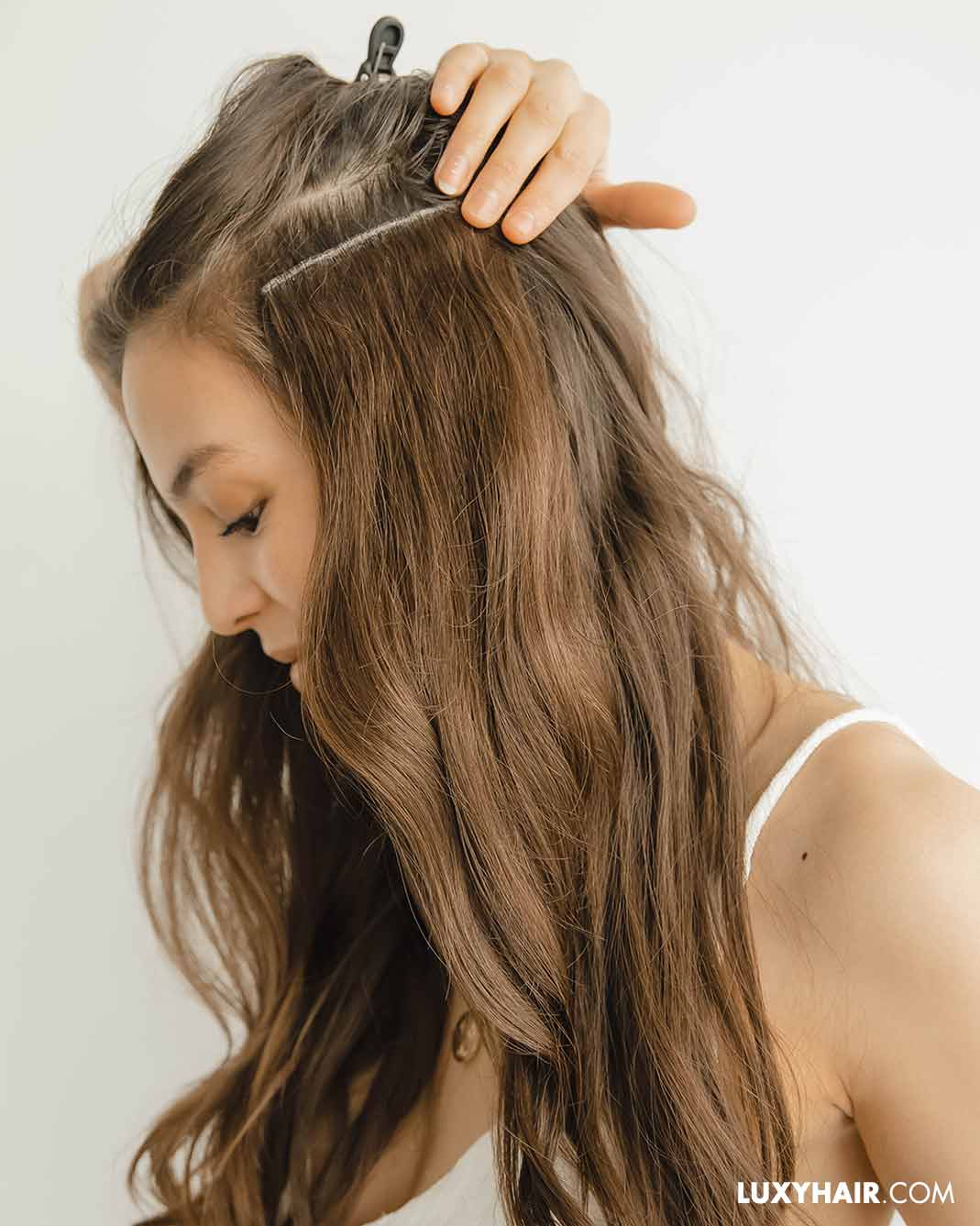
Treatment
The same synthetic vs. real hair rules apply when it comes to treatment of clip-in hair extensions just as with any hair extensions. We’ll focus more on the human hair extensions since that’s what we recommend.
Simply put, human hair extensions are very low maintenance and only need to be washed every 15-20 wears, or if there is a lot of product buildup to the point that they become unmanageable. Just like your natural hair, you simply brush, shampoo and condition the hair and let them air dry! See here for step by step instructions and tips on how to wash and care for your clip-in hair extensions. In terms of styling, human hair clip in extensions can be styled just like your own natural hair. They can be curled, straightened, and colored, however, it is always best to use a lower heat setting when heat styling the hair, and to use a heat protectant prior to heat styling. Click here for more tips on heat styling human hair clip-in extensions, and check out some do's and don'ts to coloring the hair here.
How Long Do They Last?
Once again, this depends on how well you take care of them, what products you use and how often you wear them. With proper care and regular wear, clip-ins last anywhere from 3 – 6 months, up to a year and sometimes even longer. See here for care tips and tricks to ensure that your hair extensions stay luscious for longer.
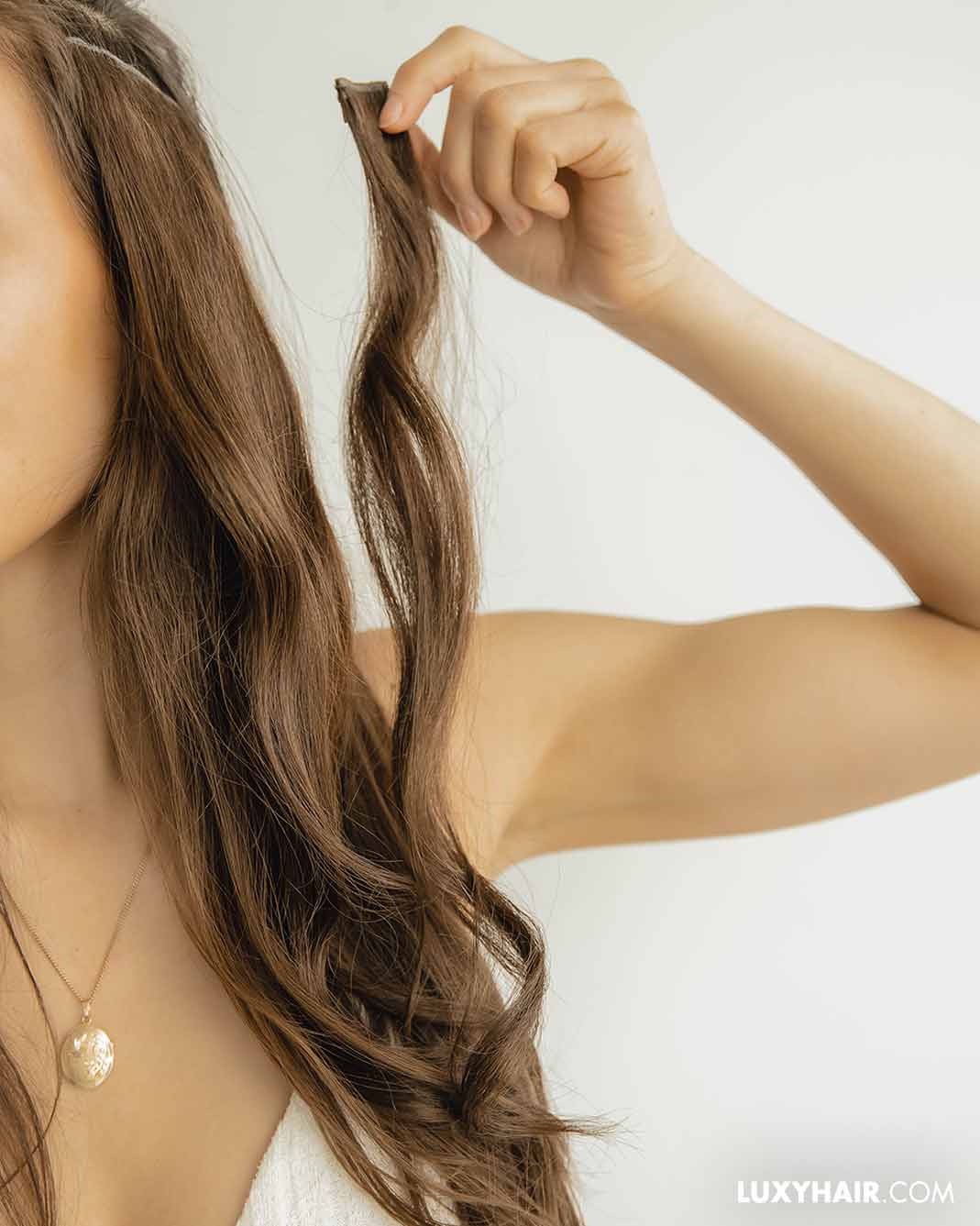
Luxy Hair offers high quality Classic (fabric weft), Seamless (silicone weft), and Halo hair extensions made with 100% remy human hair.
2. Tape-In Hair Extensions
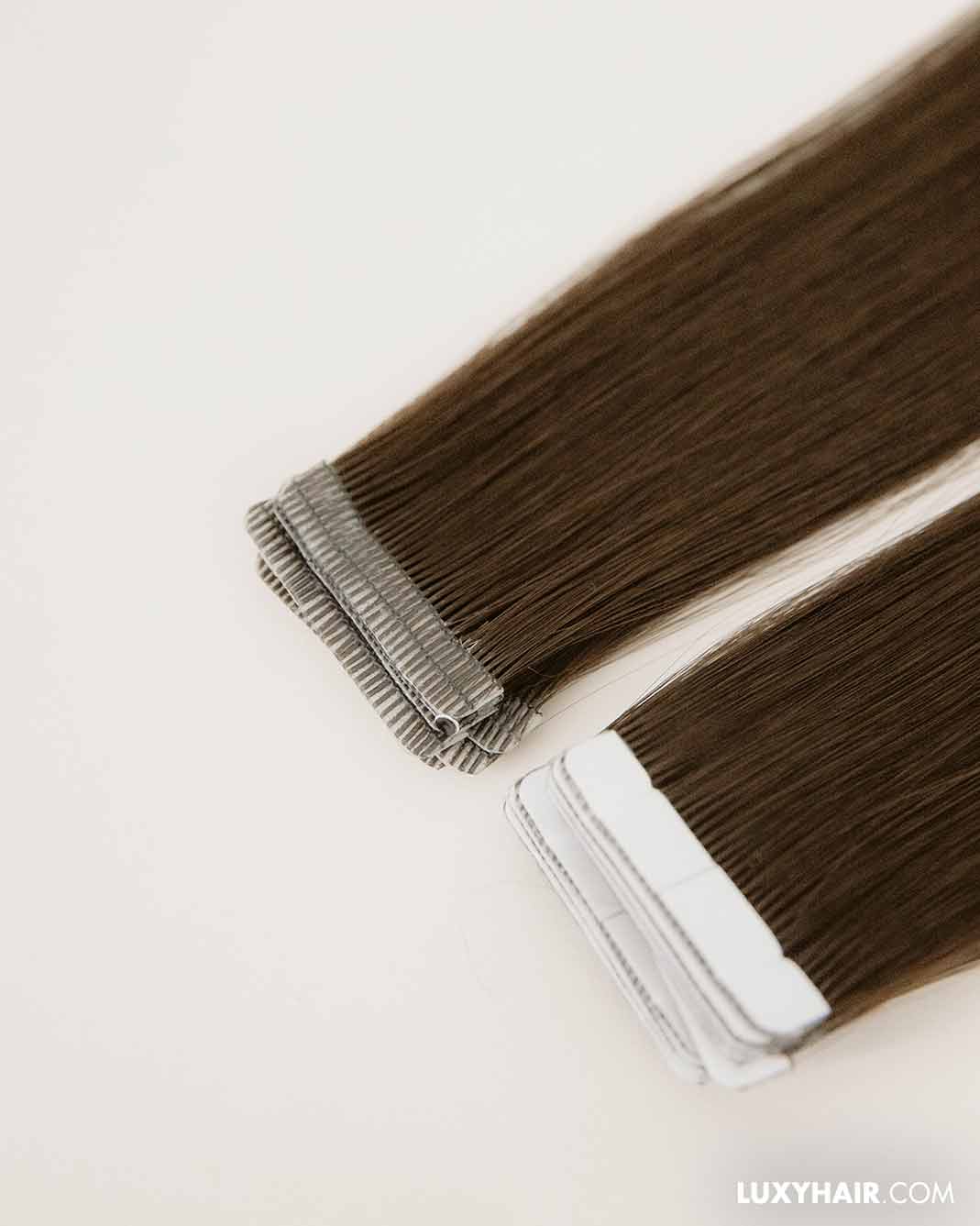
What Are They?
Tape in hair extensions are exactly what they sound like. The extensions are pre-taped and then taped/glued together on either side of your own hair. Typically a hairdresser would apply tape-ins for you because you need to align them with the roots and they are applied with a heated tool that heats up the glue. Additionally, you would need to have them removed (with glue remover) and then reinstalled. Naturally, when you apply heat to your roots and any adhesive product such as tape or glue, this can damage your hair. This process usually takes approximately 40 minutes – 1 hour to apply and if the extensions are in good condition, they can be re-used.

Treatment
With tape-in hair extensions, you have to be very careful when using conditioners or hair products because this can cause the tape to come loose or slip off. This is a very common issue with tape-ins, where the hair simply slides off. Because of this, hairdressers usually recommend you use special shampoo or conditioner and styling products that are less harsh and not as oily to ensure the glue continues to stick to your hair. You can style them any way you want because they are made with human hair, but you need to watch out for the roots where the glue or tape is.
How Long Do They Last?
Tape-ins are considered semi-permanent. Typically, they last 4 – 8 weeks before you need to remove and re-apply them. Just like any other hair, however, it depends on how well you take care of them and on how quickly your hair grows.
3. Sew-In Hair Extensions/Weave
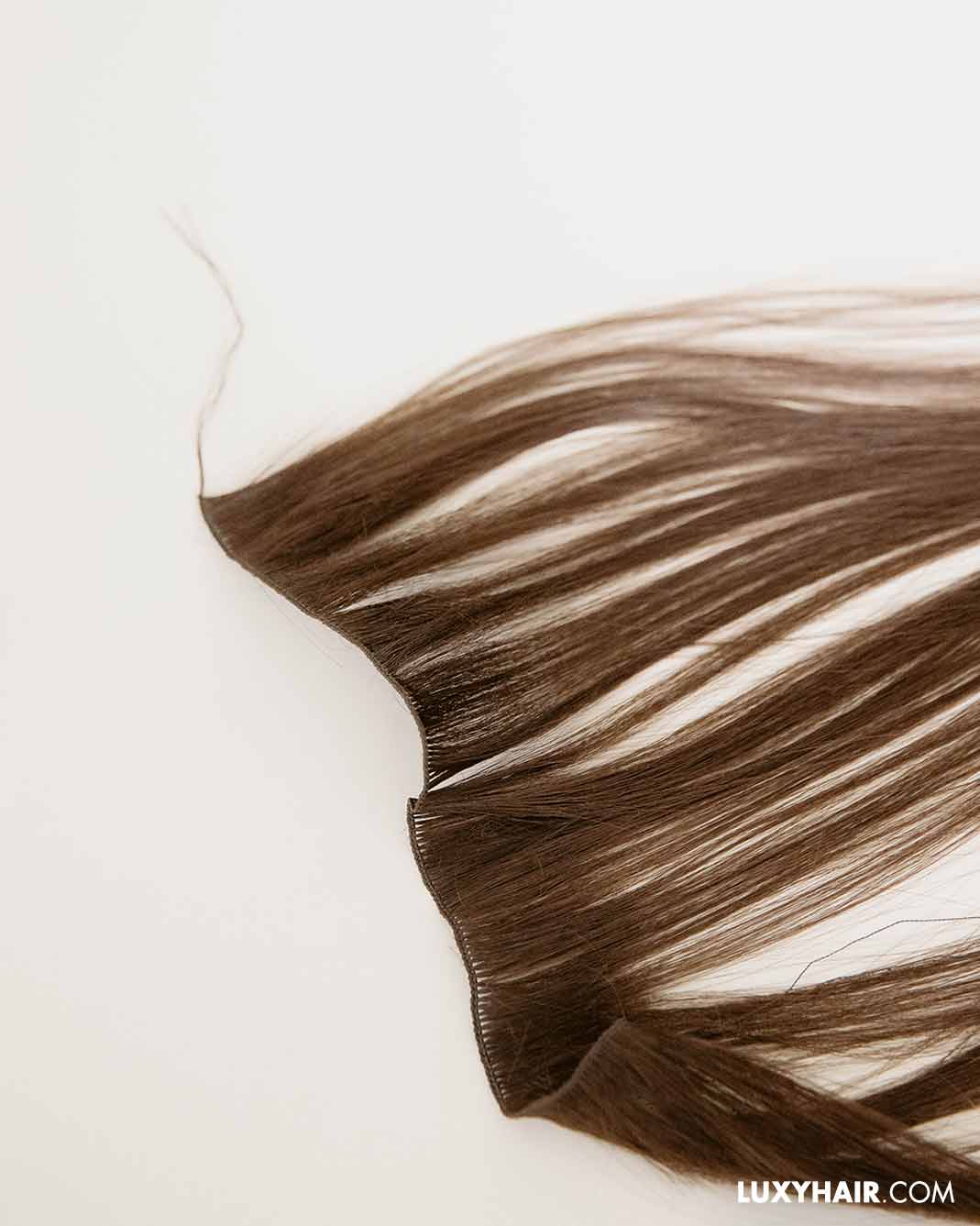
What Are They?
Weave hair is applied by braiding the natural hair into cornrows first, then using a needle and thread to sew the weave into the braid or cornrow. Weave hair extensions are predominantly used for people with thicker hair because of the way they are applied. Generally speaking, the weave application is a very long process (usually several hours.) The tight application method often puts a strain on the scalp and can feel very heavy or uncomfortable, which is also why it doesn’t work well with thin or lighter hair.
This method is applied by an experienced hairdresser, as it is a very technical and difficult application that needs to be sewn in by a professional. Sew-ins also come in wig form, which is sewn into cornrows the same way, however, the hair comes in one piece as opposed to separate wefts. This type of hair extension is popular because it’s the most permanent and seamless, as the hair is literally sewn into your own hair and cannot come off.
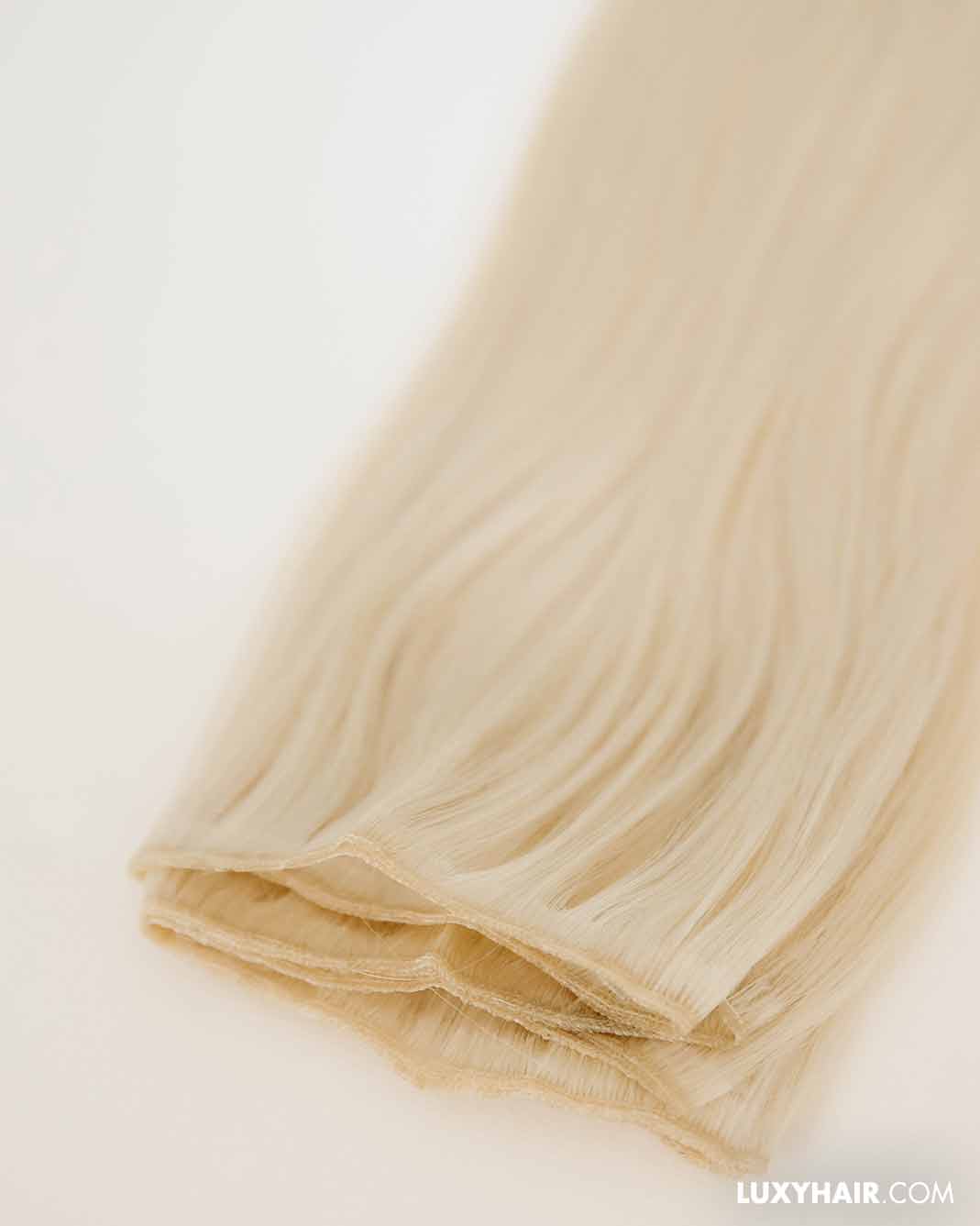
Treatment
If you have a weave, you need to moisturize the scalp, the nape and edges of the hair at least once a week and ensure you are using deep conditioning products. Another popular recommendation for people with weaves is to wash the hair with a special protein product to minimize damage and weakening of the hair. When it comes to styling, the same rules apply for real hair vs. synthetic hair—usually weaves come in real hair because of how long they are kept in.
How Long Do They Last?
It is recommended to remove the weave every 6 – 8 weeks, especially if you are trying to grow your own hair. The maximum amount of time you should have a full weave in your hair is 4 months as it will affect your natural hair's growth.
4. Fusion & Pre-Bonded Hair Extensions
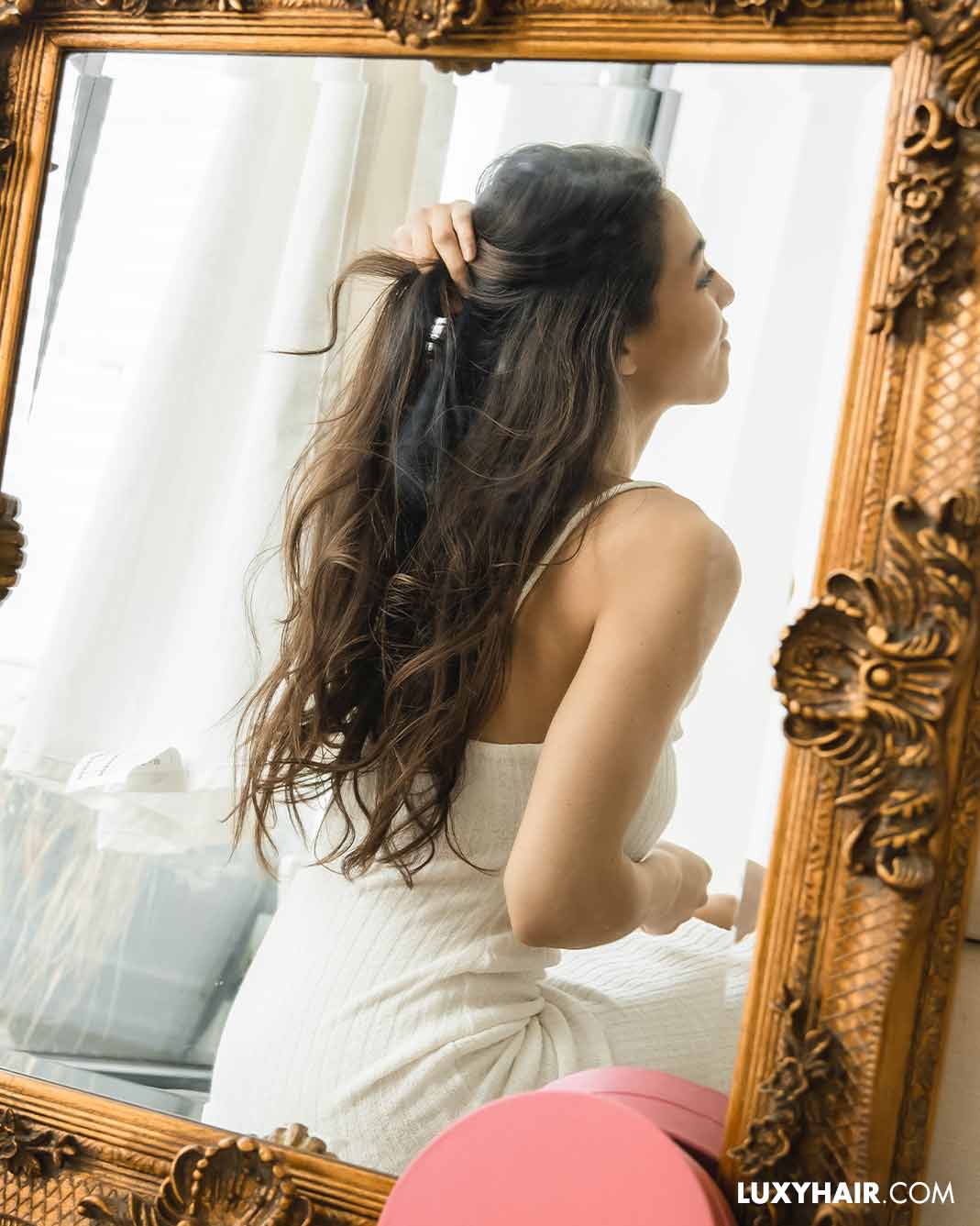
What Are They?
Fusion hair extensions (also known as bonding or pre-bonded) are fused to natural hair using different adhesives such as glue. Applying pre-bonded hair extensions take approximately 3-4 hours to apply and are also applied by a hairdresser. Fusion extensions might not be suitable for all clients as this type of application is very damaging to your natural hair, so your hairdresser may even advise against this method. The application involves a machine that looks like a hot glue gun, which essentially glues the hair to individual strands of the natural hair. Another type of application for pre-bonded hair extensions uses a heat clamp to melt the glue to the natural hair.
Treatment
Fusion/pre-ponded application is managed and treated the same way as your real hair. You can use the same products you would normally use, however, the extensions need re-positioning every 2–3 months as the natural hair grows. Additionally, due to the numerous chemicals in the glue, this method can cause hair loss, breakage, and scalp irritation.
How Long Do They Last?
They are considered semi-permanent as they stay in your hair for up to 4 months. However, like all other types of hair extensions, this varies based on your own hair type and growth.
5. Microlink Hair Extensions
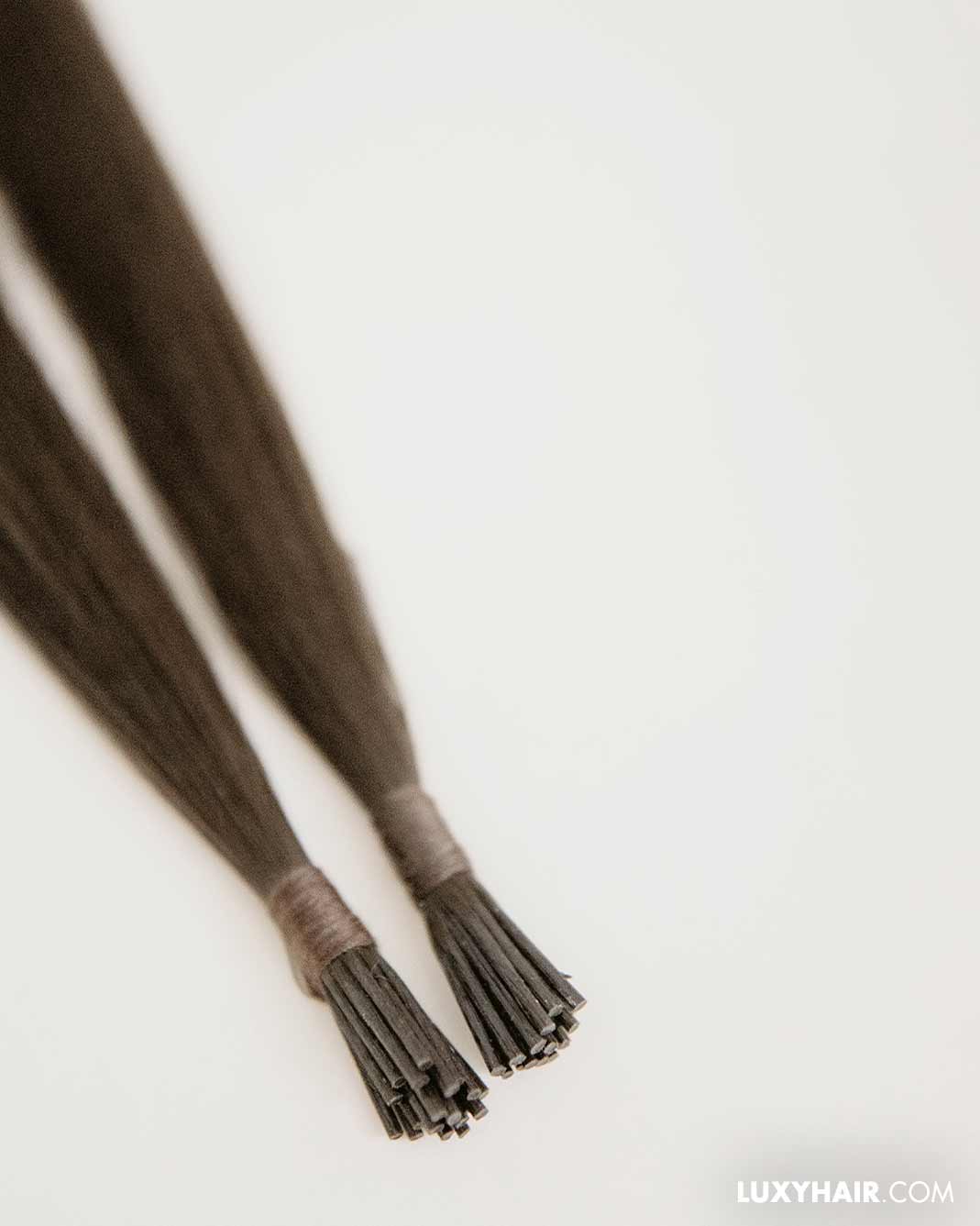
What Are They?
Microlink hair extensions are also known as micro bead hair extensions or micro loop hair extensions. These are applied by attaching tiny wefts of hair to small sections of the natural hair with a small silicone-lined bead. Then, a special tool is used to secure the bead to the hair and tightened to hold it in place. Although this method does not use heat or glue, if not installed correctly by a professional, microlink hair extensions can be damaging on the hair. The bead may be tightened too much, causing pressure and pulling at the roots, and if not removed properly, the hair can be pulled out. This method takes approximately 2 – 4 hours to apply.
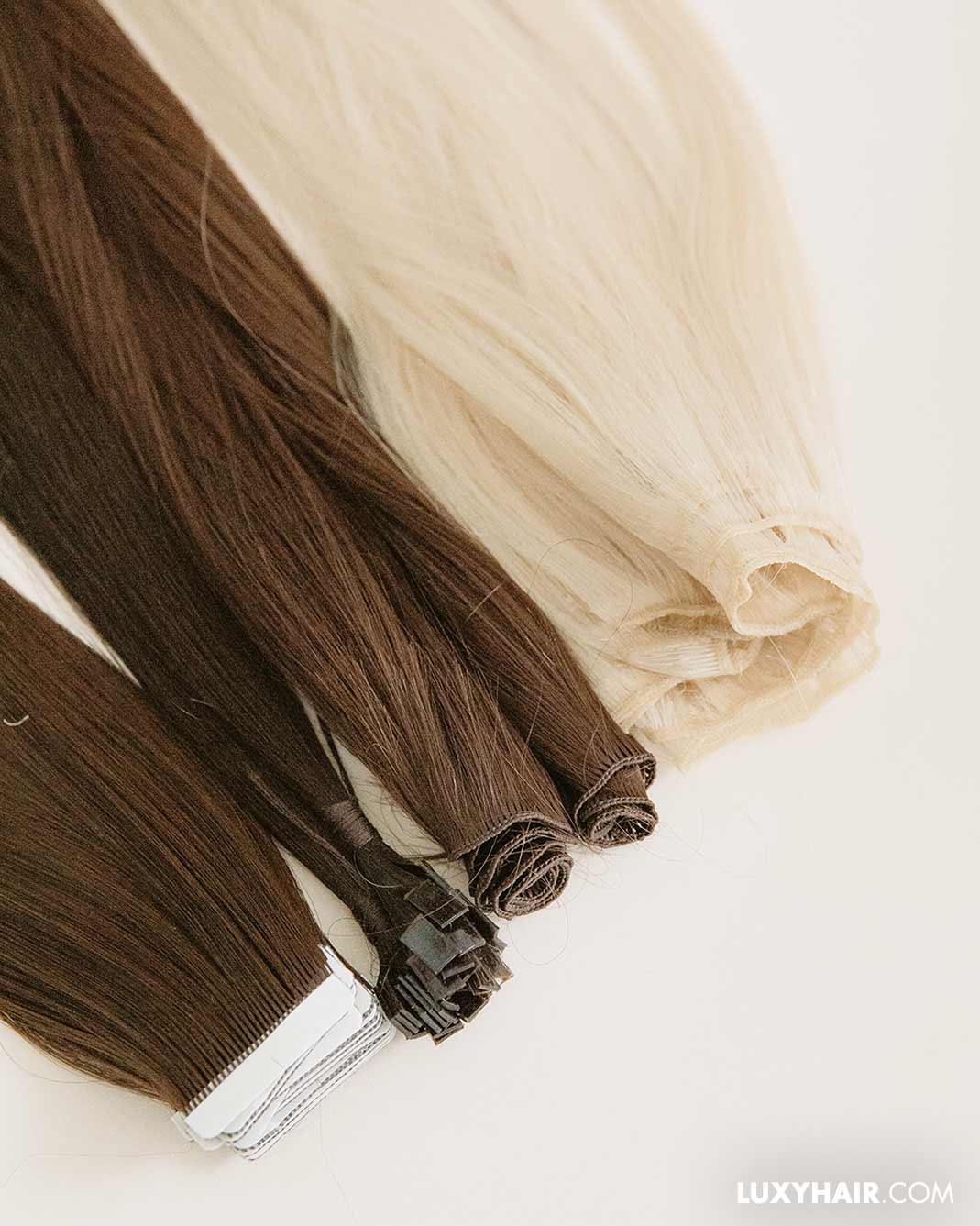
Treatment
You can wash them the same way you would your natural hair and use the same styling products. Similar to fusion hair extensions, microlink hair extensions need re-positioning every 2 – 3 months as the natural hair grows and the microbeads move away from the scalp.
How Long Do They Last?
Microlink hair extensions are considered semi-permanent and they generally last up to 4 months.
6. Wigs & Hair Pieces

What Are They?
Wigs and hair pieces come in different forms and are applied to hair topically. Long, full wigs are made to cover your entire head (fun fact: wigs used to be called “head coverings” for this reason). This also includes wigs that are called “lace fronts” or “netting”—these are just methods for how the wigs are made. Wigs act as a replacement for your own hair and are meant to cover your entire head. Wigs can be used for many reasons such as hair loss, balding, or simply to change up your look.
Hair pieces are a little different and often come in the shape of a bun, ponytail, or hair tie so you can just place it on top of your own hair. Hair pieces can be used if a specific area of your head is thinning and you need to place hair on top of this section, or they can simply be used to create a different hairstyle, such as a super long, full ponytail with just one piece to add thickness.
Treatment
Wigs and hair pieces can be a little challenging to wash, and depending on whether they are real or synthetic you have to be very careful. Since full hair pieces are usually attached to either a plastic or other material, you have to modify the way you wash and treat the hair.
How Long Do They Last?
It depends on whether they are real or synthetic and once again the way you take care of them greatly affects their lifespan as well. Typically, real human full wigs can last for up to one year if you take good care of them. The smaller pieces are usually synthetic and typically don’t last more than one month of use.
Still confused? Take our short quiz below to find the perfect set of hair extensions for you.
And that's it! We hope we've given you all the information you need to make an informed decision on which type of hair extensions will be right for you, your hair type, and your hair goals. We'd love to hear about your experiences with hair extensions as well—drop us a line at [email protected]
